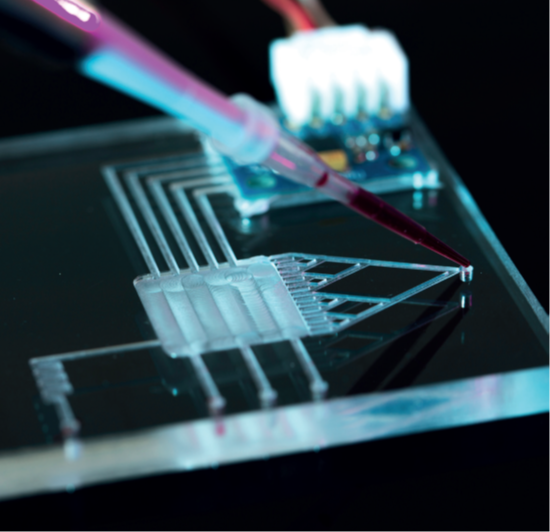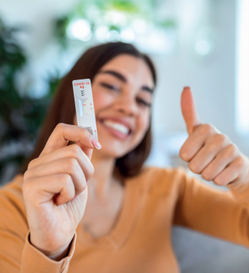Loes Segerink
“Fluid dynamics plays an essential role in developing new methods that could ultimately be implemented in mass screening programmes for lung, bladder, colon, and endometrium cancer.”

Loes Segerink
Professor Biomedical Microdevices, Twente University
Fluid dynamics for healthcare
Lab-on-a-Chip diagnostics.
Point-of-Care (POC) healthcare testing is a rapidly fast-developing field in clinical diagnostics and is expected to define the future of diagnostics in healthcare. The most well-known POC tests are the COVID self-test packages used during the pandemic that proved to be a strong tool for outbreak control, although they still were inaccurate in some cases. Fluid dynamics play an essential role in POC testing since in all cases body fluids are examined in a small user-friendly and equipment free setting, ranging from simple fluid capturing devices to microfluid management for lab-on-a-chip POC testing.
POC sensors such as the handheld glucose sensors for diabetes patients are widely known, but rapid development now also enables sensors for detecting proteins, small (inorganic) molecules, and nucleic acids. Access to rapid and reliable detection methods of nucleic acids is critical in many fields, such as life sciences, environmental monitoring, biotechnology, and maybe most notably, health care. Sensing pathogens based on their genetic information, for instance, by monitoring circulating cell-free DNA/RNA particles related to various (cancerous) diseases, makes early diagnosis and treatment possible. However, this depends on methods that allow the detection of ultralow concentrations of nucleic acids with high sensitivity and specificity, in this case from urine samples.
The University of Twente focuses on the development of new techniques that can measure these ultra-low concentrations of nucleic acids in urine. Although the volume of urine is not the limiting factor, the throughput and volume of a microfluidic chip is a technological challenge. In the case of surface-bound sensors, the urine can be flown over the sensor, but the high throughput of these volumes will be challenging for microfluidic applications. Furthermore, the chance of all molecules binding to the surface also depends on reaction kinetics between the target and probe and mass transport towards the sensor, influencing the time it takes for the sensor to equilibrate.


